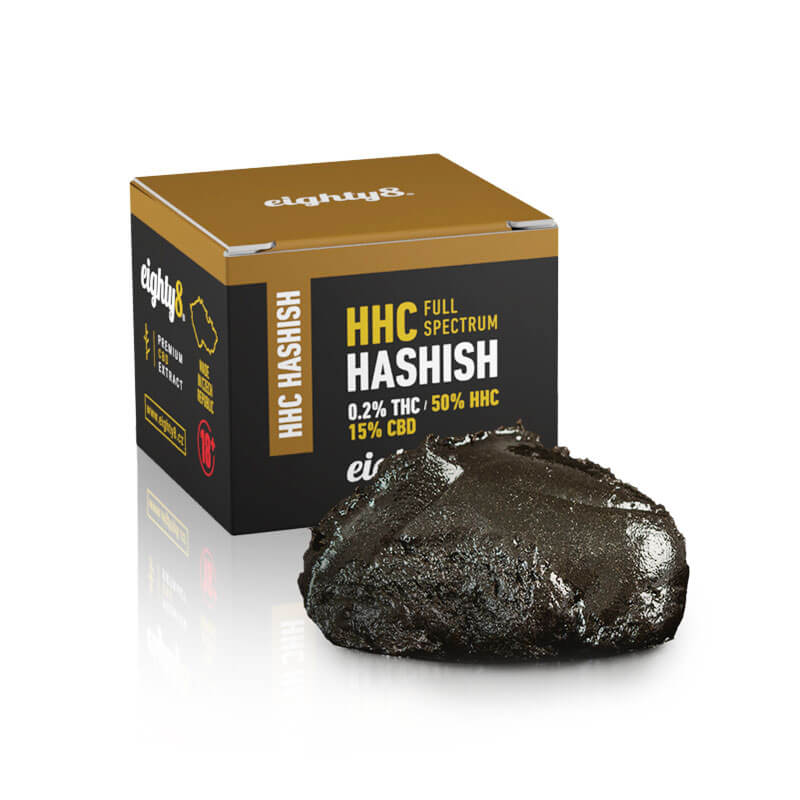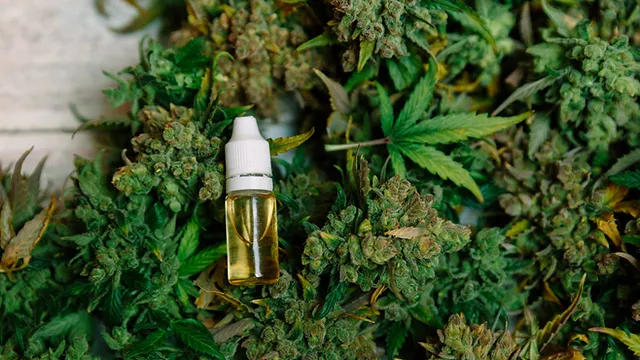Legal or CBD hashish is becoming a more and more well-liked substance. There are a few variations between the two, even though they can be made in the same manner as traditional marijuana hash. If you have any questions about the manufacturing process of this cannabis resin concentrate, this is the place to ask them.
This post will teach you about the incredible method that transforms CBD flowers into a powerful product that is regarded at least as highly as cannabis.
What is CBD hashish?
As we clarified in our tutorial, hashish is technically an extract of cannabis that concentrates the compounds present in the buds, such as terpenes and cannabinoids, while simultaneously separating the plant material from the trichomes. The final product has a far higher potency than cannabis flowers and is extremely concentrated in resin.
Cannabidiol (CBD) hashish is made in a number of ways and contains a high concentration of CBD. THC, which has euphoric and intellectual effects, is present in high concentrations in traditional marijuana hashish. On the other hand, CBD hashish has a high concentration of a non-psychoactive cannabinoid with more physiological and relaxing benefits. These effects may vary depending on the type of cannabis used during processing and the amount of cannabinoids in the final resin.
How is CBD used to make hashish?
Since the raw ingredient is the only variable in CBD hashish manufacturing, all of the conventional techniques for hashish creation apply. Put another way, high-CBD cannabis strains’ flowers are all that are needed to make CBD hashish, as opposed to high-THC marijuana plants. From there, a variety of goods are available, such as liquid hash that works with both a conventional hash plate and a CBD vape pen.
Methods for improving CBD Hashish:
There are several conventional techniques for producing hashish. Before being harvested, the live plant itself or its dried and cured blooms may occasionally be utilized as the substrate. Compacting the resin of the cannabis plant (Cannabis sativa) on a hash plate is the end outcome, regardless of the variety of extraction and manipulation techniques used. Now, let’s talk about the conventional and widely used methods for extracting resin:
Hashish is extracted from dried flowers or buds.
This is the most extensively used and well-liked method of hashish production in the world. It is produced during the procedure of extracting the resin from previously harvested marijuana buds. The flowers’ innate ability to release resin when handled is the key to it all. Because of this, many curing and preservation boxes for cannabis these days come with built-in netting so you can save and utilize the resin that the buds naturally exude. But we also possess the authority to physically enforce trichome release.
You can try utilizing a number of tools or doing it at home to extract dried hash. As an example, we may place the flowers in a stocking-covered glass or plastic container. Shaking the bottle over down will cause the resin to leak through the stocking. It would be similar to the powder that the grinder uses to concentrate in its lower tray.
Another technique is to put the flowers on top of a tight sieve, tap the sieve with a stick to force the resin out of the swaying flowers (the end product is a dish known as “apaleado,” which is particularly popular in Morocco). Finally, there are devices, such as the Pollinator, that perform the task manually using a motorized drum.
You Can Also Check for What Is Hashish, Exactly?
To extract hashish, use ice
Ice and water can also be used to extract the resin glands from the buds. Because trichomes and flowers (plant matter) react to water differently, the method’s premise is this: soaking the buds makes it very easy to extract the resin.
The problem with this is that it becomes much harder to handle and extract hashish since the resin softens when it gets wet and creates a mass once it is taken out of the water. Because of this, trichomes harden rather than soften when ice is added to the water using a method known as Ice-O-lator. We had a conversation once with Mila Jansen, the creator of this method, popularly referred to as the Queen of Hashish.
As a result, we will get our hash by simply filtering the resin through meshes of different micronages that are immersed in ice- and water-filled containers. This method can be used at home using a bucket, water, ice, and nets. As an alternative, we can buy fully functional Bubbleator washing machines from specialty retailers.
One variation of this process that renders the trichomes very brittle and prone to breaking apart, allowing them to flow through the mesh, is to use dry ice in place of water.

Methods of hashish extraction based on solvents
Finally, there are resin extraction methods based on solvents. These solvents are substances that aid in dissolving trichomes so hashish can be produced by treating them later. Although they are usually gases, they can also be oils or alcohol.
For example, butane and other gasses can be used to make the popular hashish BHO (Butane Hash Oil) and its varieties (Shatter, Sugar, Wax, etc.). The problem with these gasses is that they are toxic, and if hashish is not thoroughly cleansed, remnants may still remain. These methods are also dangerous because the vapors are flammable. The resin can also be extracted and utilized to create oils with olive oil or tinctures with alcohol, albeit the final result won’t be authentically hashish.
Hashish is extracted from the living plant.
This is the oldest extraction technique, and it’s very popular in Pakistan and India. The outcome is frequently called “charas hashish.” All you have to do is rub your palms over the plant buds until the resin adheres. Just take it out of your hands and tuck it in.
Several things must be taken into account when applying this tactic. Pick the ideal time to rub the resin; if you do it too soon, it will still be “raw,” which will not have much of an impact. Second, the process is ineffective and time-consuming. You will need to rub for around an hour in order to obtain one gram of hash. Lastly, even if the finished hashish will be of the best grade imaginable, rubbing can be a harsh procedure that damages the plant’s buds. To allow the plant time to replace the lost resin, it is typically done a few weeks prior to harvest.
These days, robotic methods have been created that allow for the achievement of a comparable outcome—clearly not the same as the original, given its entirely handmade nature.
Moonrocks are flowers coated in pollen, a concoction of kief and specific extracts, then dipped in extract.

Unique Procedures in Lawful CBD Hashing
One unique feature of CBD hashish is that it can have THC concentrations up to and beyond the legal limits that permit its sale, higher than hemp flowers. As a result, it goes through a cannabinoid analysis at the end of the procedure to ensure that the THC levels are kept below the 0.2% legal limit. It is required to run that hash through an extra step if it surpasses them.
After exploring the many hashish elaboration techniques, we reach the conclusion of our voyage. While we sincerely hope you enjoyed it, seeing the outcome is unquestionably the most satisfying part. We cordially encourage you to enjoy the most calming hashish from Cannactiva’s hand. Enjoy your travels!
Thank you for choosing CBD BLOGGING.

Leave a Reply